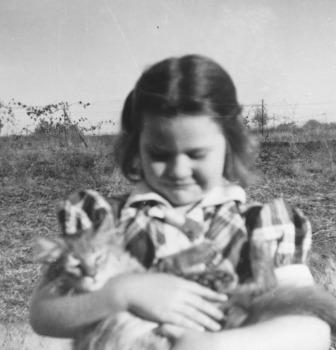
Kitten season
Many of us are longing for spring. But for cat rescuers, it can be the worst time of the year. And not just for our feral friends.
The Humane Society estimates that a pair of breeding cats could produce more than 400,000 cats in seven years. Yet people refuse to get their cats fixed, instead dumping them or dropping them off at a shelter, where someone else has to euthanize a mom and her kittens, usually immediately. If every person with a cat would use the low-cost or free options to sterilize their pet, the problem would be-gin to resolve. Even outdoor and working barn cats will live healthier and happier lives.
We all cheer when we read about a happy reunion, but the number of happy endings is low. All too often the loss was the result of human mistakes. Kitty is al-lowed to come and go at will because:
1. Kitty is a cat, and they need to wander. Hogwash! Would you let a toddler play in the street? Unattended? My cats are my family. I accepted responsibility for their welfare. If you do not want to take care of an animal, get a rock.
2. Kitty is in heat, so she might be marking or howling. Call a vet or the local shelter and schedule a little operation. Procreation is not a necessity to be healthy and happy. Even a neutered house tom will be upset if an intact tom is spraying “his” house or garden in an effort to get at a female in heat. And females can go into a heat at four months and stay fertile up to two weeks.
3. Kitty damaged something, or messed on the floor, or is a kitten with no boundaries. There are no “easy” pets. Spaying and neutering will calm down many overactive cats. If you are not ready to take on a kitten, consider giving a mother cat a home. All pets need some attention and care, even goldfish. Don’t just throw an animal away without asking questions first, and/or trying to find a more suitable home.
4. Kitty is pregnant. This is the most common excuse for dumping a female cat. For males, marking and not using the litter box is often the excuse for tossing a cat out the door.
Most or all of these issues can be resolved with human intervention.
TNR (trap, neuter, release) is the most effective method for reducing the number of feral or abandoned cats. It is becoming more and more of a partnership among rescuers, shelters, and charitable organizations. It is part of the growing “no kill” movement. Whether you’re talking about “community” cats or pampered house cats, the first step to managing the cat population is to make the population a manageable size. The old ways of doing that are barbaric or expensive.
Most rescuers look forward to a day when Kitten Season is not a death sentence.
Kat Brown of Albuquerque is a lifelong animal-lover, especially of cats. Share your cat stories or comments at katskorner88@gmail.com.
